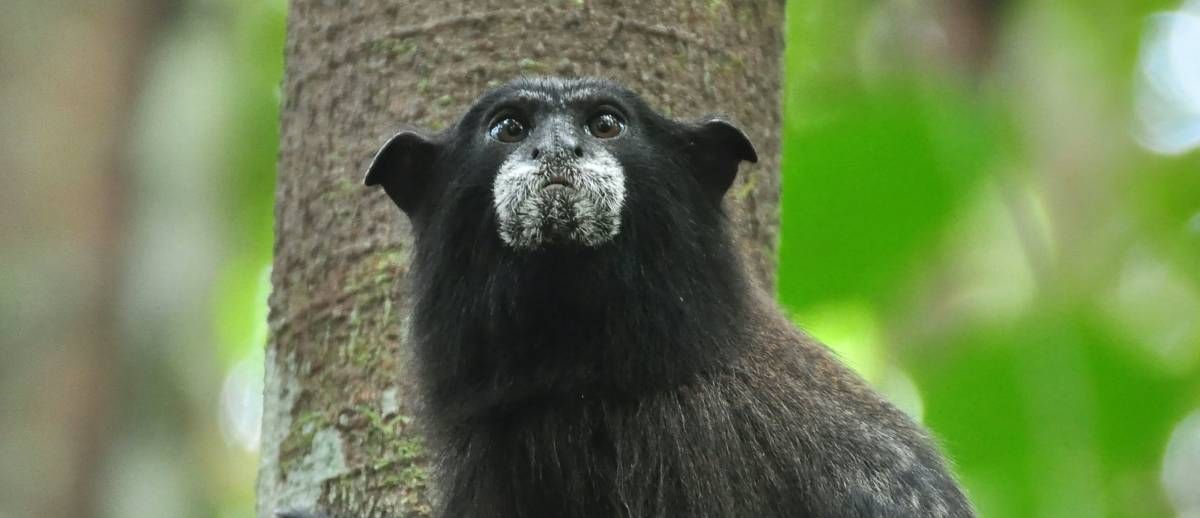
Monkeys help regenerate rainforests – through their poo, a new study has revealed.
Scientists conducted a long-term study on the role monkeys play in the regeneration of degraded forests.
For over 20 years, they observed two species of tamarin in the Amazon rainforest of Peru.
The tamarins feed on fruits, but empty the seeds undigested with their faeces.
The research team studied the dispersal and germination of seeds as well as the growth and genetic origin of various plants in a forest that had emerged from a former pasture.
Their findings, published in the journal Scientific Reports, proved for the first time that monkeys have a “decisive influence” on the dispersal of seeds from the original primary forest to the regenerating secondary forest.
An area of about four hectares (9.9 acres) was cleared and used as pasture for water buffalos between 1990 and 2000.
But after the grazing was abandoned, rainforest slowly developed again.
The researchers observed that moustached and black-fronted tamarins were temporarily in the early secondary forest.
They said that tropical rainforests store large quantities of carbon dioxide, produce oxygen and provide habitats for many animal and plant species.
And If these ecosystems, which are so important for the global climate and biodiversity, are destroyed, they will recover very slowly, if at all.
Study leader Professor Eckhard Heymann, a scientist at the German Primate Centre, explained that tamarins feed mainly on fruits and disperse the seeds of many different tropical trees and vines over their faeces.
He said: “We wanted to find out whether the seed dispersal by monkeys has a demonstrable effect on the natural regeneration of forests.”
To investigate which seeds were dispersed from the primary forest to the secondary forest, the researchers identified seeds from the monkeys’ faeces and observed their development in the secondary forest.
Around 10 per cent of the seeds stem from plants growing in the primary forest and were dispersed into the secondary forest. A part of these seeds germinated and the resulting seedlings survived for at least one year.
Prof Heymann said the seedlings could be assigned to eight different plant species. Seven of these species could only be found as adult plants in the nearby primary forest.
To genetically verify the results, the scientists analysed seedlings and young plants of the neotropic tree Parkia panurensis.
The seeds of that tree are dispersed exclusively by tamarins in the area around the research station.
The researchers extracted the DNA from leaves of seedlings and young plants growing in the secondary forest and compared them with those of adult Parkia trees in the primary forest.
Half of the seedlings and young plants could be matched to 11 parent trees in the primary forest. The distances between young and parent plants were exactly in the range over which the tamarins disperse Parkia seeds.
Prof Heymann said: “Our data show for the first time that the moustached and black-fronted tamarins effectively disperse seeds from primary forest into secondary forest.
“We were able to prove that the seeds germinate and form young plants, thus increasing the diversity of species in the secondary forest.
“The tamarins have been shown to contribute to the natural regeneration of areas destroyed by humans.”
The study included data collected since 1994.
Prof Heymann added: “At that time, we did not expect the cleared forest area to ever recover.
“However, the study shows how important data collection and investigations over a very long period of time are in order to be able to make reliable statements about slowly developing ecological processes.”